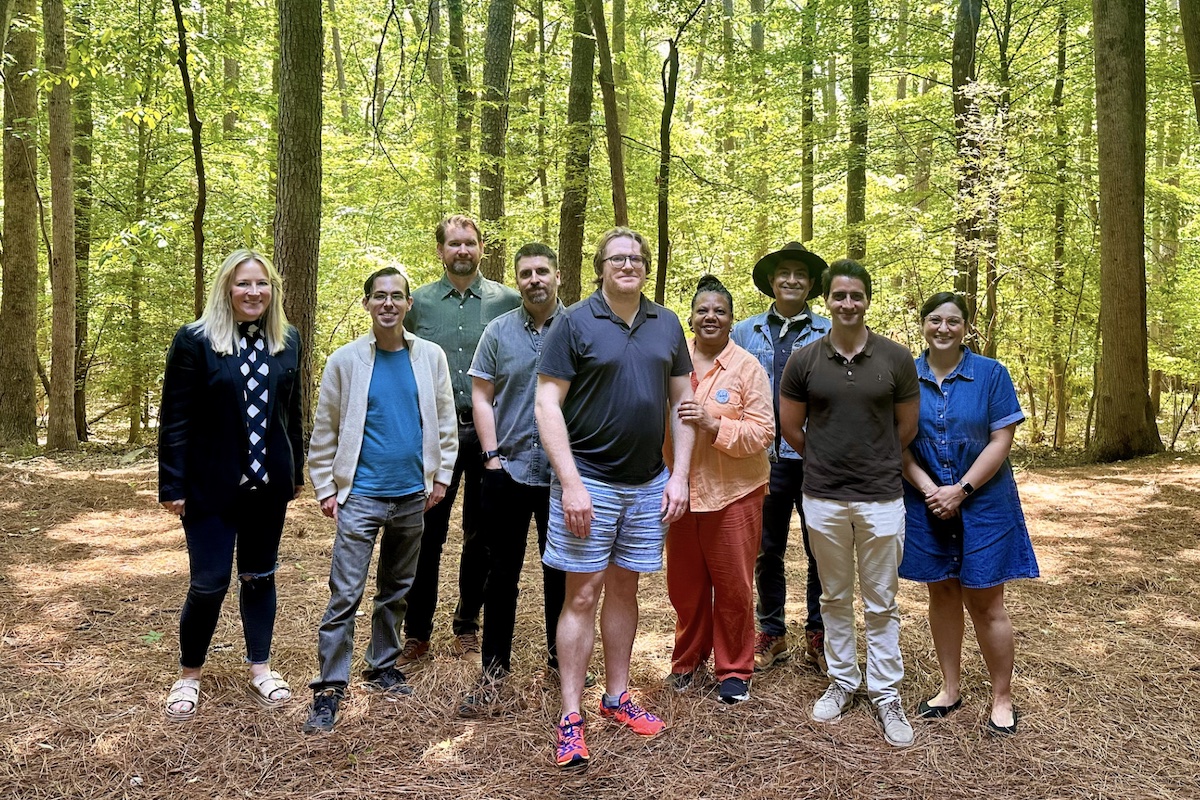Immersed in the sounds of northern cardinals and mockingbirds, Emory’s Luce Center served as an incubator for multidisciplinary brainstorming around sustainability issues, experiential learning about place, and pedagogical innovation this spring, as the 2025 Piedmont Project and the Piedmont Teaching Assistant Training and Teaching Opportunity (TATTO) Program convened.
Now in its 24th year and sponsored by the Office of Sustainability Initiatives (OSI), this academic workshop — founded by Peggy Barlett, Goodrich C. White Professor of Anthropology — has equipped more than 500 faculty, staff and graduate student instructors to integrate sustainability into their curricula. As of 2024, 17.8% of all Emory courses are sustainability-related, and 79.1% of Emory’s academic departments offer sustainability courses.
This year’s cohort of nine faculty members and nine graduate students from across Emory’s campuses engaged in rich discussions led by Lydia Fort, assistant professor in theater studies and an OSI Faculty Fellow.
At the start of the three-day workshop, Bree Ettinger, associate teaching professor of mathematics, and Ciannat Howett, associate vice president of sustainability, resilience and economic inclusion, introduced participants to the history of sustainability at Emory. They also encouraged participants to use the university’s physical landscape as a teaching tool.
Eri Saikawa, Winship Distinguished Research Professor in Environmental Sciences, delivered a data-driven presentation featuring global climate analyses, while Justin Burton, associate professor of physics, demonstrated how he incorporates sustainability into his coursework.
Participants also practiced nature journaling with Marina Magloire, assistant professor of English. By composing their own observations of nature, participants explored how connecting with place can deepen student engagement in the classroom.
Francesco Brarda, a TATTO alumnus and PhD student in computational mathematics at Emory’s Laney Graduate School, then shared his research on artificial intelligence and its environmental impact — a project inspired by his experience in the Piedmont Project discussion groups. He hopes to inspire future participants with his work.
“The Piedmont Project has helped me to think creatively about incorporating sustainability into my teaching,” Brarda says. “The discussions, presentations and activities offered great ideas to keep improving and to engage students with real environmental issues. It is also a wonderful chance to learn about Emory’s continuous effort to reduce its emissions.”
The program’s crescendo came during a reflective walk in Hahn Woods with Anthony Martin, professor of practice in environmental sciences, where participants reflected on their learning experiences alongside the South Fork of Peachtree Creek.
Faculty members or teaching graduate students interested in participating in the Piedmont Project can find more information on the Piedmont Project website. Current students interested in taking a Piedmont Project course can view the official syllabi page or subscribe to the OSI newsletter for course registration materials in August.

Graduate students participating in the Piedmont Teaching Assistant Training and Teaching Opportunity Program included (left to right) Lyna Ami Ali Barrow, Meike Robaard, Rima Pai, Manjari Sahay, Katelyn McVay, Mitchell Scott, Riti Bahl, Sabrina Chow and Francesco Brarda.
Photo by Kendra Ding

